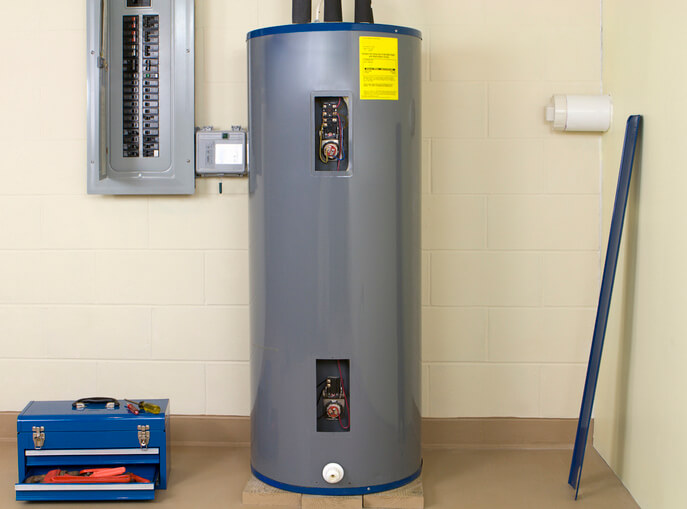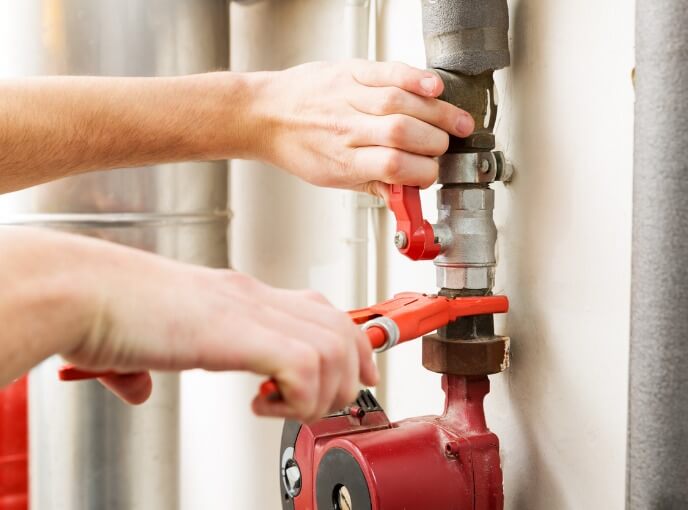Summer brings to mind swimming, cookouts, and vacations. But one not-so-obvious item that should be on everyone’s summer to-do list is plumbing maintenance. In one way or another, summer recreation depends on (but also adds more pressure to) plumbing systems. Whether it’s more showers to wash off sweat and beach sand or frequent flushes by kids and guests, your plumbing may get a workout this time of year. Here, Quality Plumbing of Gainesville Inc. provides easy-to-follow maintenance tips to help you avoid any plumbing problems this summer.
Anticipate Where Your Plumbing Will See The Most Use
Plumbing repairs are often needed where the system sees the most use. For example, a shower that runs daily is more likely to have a clogged drain or water leak than a guest bath that’s seldom used. Experienced plumbers in Gainesville anticipate potential issues that stem from increased usage, and we’ve listed sections of the plumbing layout that we focus on based on our customers’ routine activities. Observing whether these apply to you, or adding features you think are important, allows you or the plumber to inspect and shore up these areas during plumbing maintenance to avoid future repairs.
Water Heater
Indoor and outdoor showers see an increase in usage as residents cleanse sweat, sand, grass clippings, and other minimal hazards typically to outdoor activities. Water heaters make sure the water for those showers is at a comfortable temperature. However, the typical water heater lasts for only 10 years to 15 years, and frequent use can lead to wear and tear on the tank and other components.
Hard water, which many people have in North Central Florida, can create mineral deposits inside water heater tanks that can impede the water flow. Meanwhile, water leaks can cause corrosion on the hardware or the tank, which also could be signs that the water heater might burst soon.

What To Check For
The typical Florida home has the water heater located in a utility closet on the first floor. Before you increase your showers, check the water heater for rust, leaks, and other signs of problems. If you find anything out of place, snap a few photos or write down your observations and then call a plumber. Spotting corrosion often signifies a worn out anode rod, the metal piece that traps corrosive elements in the water. Anode rods are not expensive to replace, but they can be tricky to install without proper instruction. Meanwhile, finding water underneath the water heater may indicate a faulty temperature and pressure relief (T&P) valve, which is an easy part to find and replace but may require a large monkey wrench. For safety, turn off the gas or electric supply, depending on the model, and the cold water valve before starting any repairs.
Why Summer Is Right For Water Heater Repairs
Summer is an opportune time for water heater maintenance and installations. On the one hand, many homeowners make plans to leave home on a vacation at that time. While winter is prime time for visiting Florida, summer is when many folks head north to cool off. On the other hand, those who stay in Florida during summer know that hot temperatures are best met with cold showers, which means you can get by for a day or two without using the water heater. Lastly, new water heaters are energy efficient, and installing one would help offset the higher electric costs associated with running your home’s A/C unit all summer.
Water Line
Your home is fed water through a main water supply line. If you live in Gainesville, the source of your water is probably the Floridan Aquifer, or maybe it is a private well. In either case, you’ll depend on your water supply a lot during the summer — lawn sprinklers, above-ground pool, clean laundry or dishes for guests — and so you should preemptively check the supply line for leaks and other problems. Your home’s water supply line can be traced from the main water shutoff valve, which is typically located beside the water heater. Should you find a water leak, close the valve immediately to stop the flow of water and limit the extent of water damage. You can also shut off the valve before leaving on vacation to give you peace of mind.

How To Inspect For Leaks
Find the shutoff valve and follow the pipe from there. Look for water droplets, puddles on the ground, or other signs of moisture. Check for leaks under sinks, which usually have secondary shutoff valves. Also, listen for strange noises when the water runs, and make a note of any vibrations or other noteworthy details about the pipes. Take the inspection outdoors, as well. Check areas where water pipes are buried. Puddles on the ground after there’s been no rain, or weak pressure from sinks or spigots, can indicate a ruptured water line underground. Common causes of leaking pipes in North Central Florida are live oak trees. While they are popular in local landscaping, live oaks also have powerful root systems that can spread over 90 feet and demolish water pipes in their way.
Schedule Professional Leak Repairs
Plumbing sealants can fix some leaky pipes or joints, but for the money you spend, you’d instead be better off scheduling plumbing services. Not only do our plumbers use industrial-strength leak-repair products, but we’re professionally trained on how to use them.
Aside from leak repairs, a plumber can also determine your water’s quality. During the summer, you may drink more tap water to stay hydrated in the hot conditions. While the source water is probably potable, especially if it was treated at a water treatment plant, any latent minerals, rust, or remnants from past leak sealants could affect the water quality in your home.
Learn A Few Basic Plumbing Repairs
Proper plumbing maintenance will guard your home against routine problems caused by increased plumbing use during summer. However, all the maintenance in the world can’t prevent an overflowing toilet after a child flushes toys or other non-flushable items. When unanticipated problems occur, you have two choices: 1) call a plumbing company in Gainesville that offers emergency repairs, or 2) impress your guests with a DIY fix. If you chose option one, feel free to get in touch with us anytime. Otherwise, here are basic plumbing repairs that will get you out of a jam — or a clog.
Unclogging A Toilet With A Plunger
Plungers are easy to use. As long as you can tell the top and bottom ends apart, you’re qualified to do some unclogging. When the toilet clogs, wait about 10 minutes for the water to settle. Next, insert the plunger over the opening in the base of the toilet bowl. Push on the handle to create suction. Then, while keeping the end of the plunger in contact with the bowl, move the handle up and down at a modest pace until the toilet flushes. The ultimate rookie mistake is to flush a clogged toilet. This causes the water to overflow and put your bathroom out of order. If the toilet bowl is so full that you’ll risk getting splashed while operating the plunger, remove the toilet lid and manually lift the flapper (the rubber seal hooked to a chain) to let out a cup or two of water, and then test whether it flows down. If you’ve got flow, it’s safe to try and flush the toilet. If there’s still no flow, lay down newspaper or paper towels around the toilet to catch splashing water; you may also want to put on old clothes.
Stopping A Dripping Sink
A dripping faucet, with its incessant subtle noises, can be like a recurring nightmare. However, the problem is usually caused by a worn O-ring, a small rubber seal that can be picked up at most hardware stores for a few dollars or less. To attempt an O-ring replacement, you’ll need to take apart the faucet. Start by turning off the water supply — the one underneath the faucet, not the main water supply. Now you’re ready to dismantle the faucet. Wrap the jaws of your pliers or wrench in duct tape to avoid metal-on-metal contact that might scratch the faucet. If the O-ring is old, it likely indicates the faucet is well-used and therefore may have mineral buildup that can impede the flow of water. To remove the minerals, clean each part using distilled vinegar and a soft bristle pad. Don’t throw out the current O-ring, as sizes can vary and it helps to take it with you to the hardware store for reference. Grease the new O-ring before installing it. Once the faucet is fully reassembled, turn on the water supply and test the faucet.
Quality Plumbing of Gainesville Inc. is ready to meet your plumbing needs throughout the summer. Call us today to schedule plumbing services in Gainesville!
